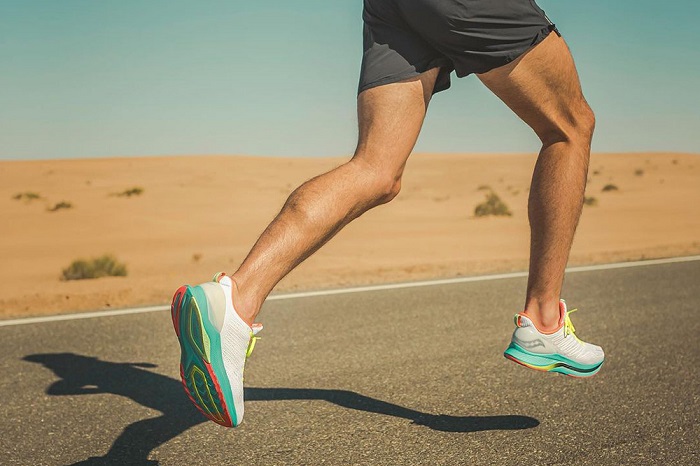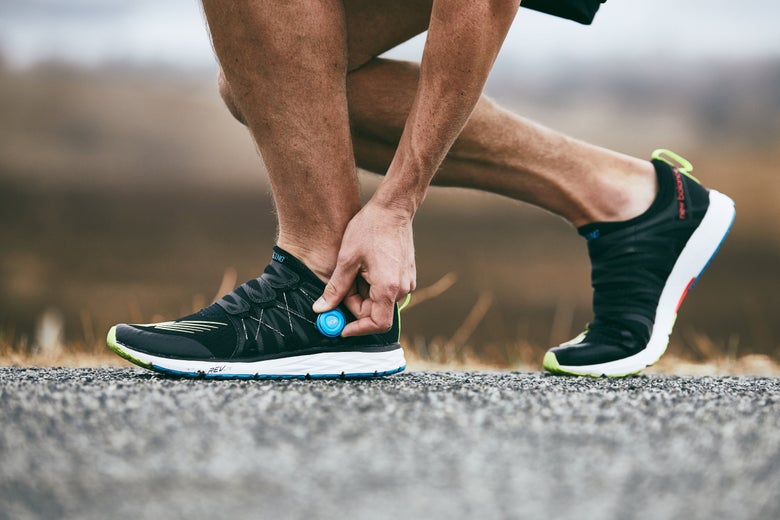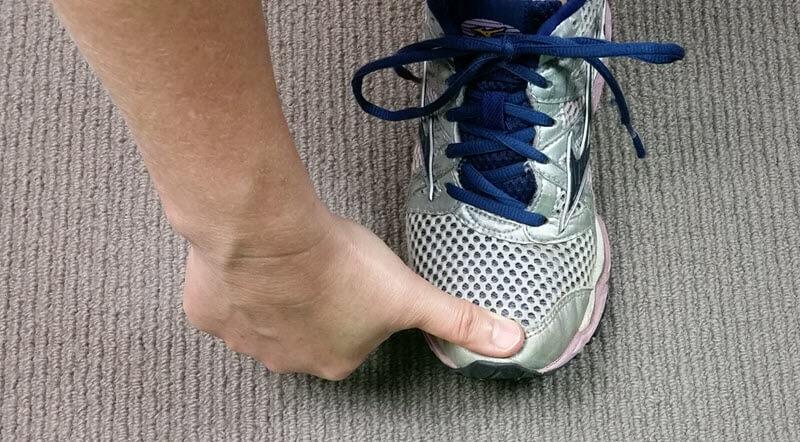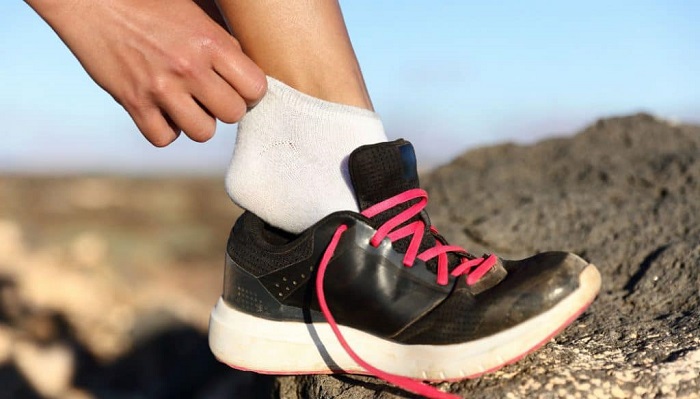In recent years, the question ‘how should running shoes fit’ has become popular among avid runners. They’ve been more aware of the importance of proper fit. If that’s what you’re concerned about, too, we’re here to help you.
Let’s come through all the interesting info below!
What If Your Shoes Are Too Tight or Too Loose?

At the front of our ankle, there are a bunch of nerve fibers, tendons, and blood vessels.
If you wear shoes that are too narrow or too short, your toes may press against the front fiercely. Not only does this contact cause distressing pain and missing toenails, but it also impairs toe ligaments.
Besides, squeezing your toes too tightly destroys the alignment of the muscles. Thus, you might experience more frequent foot fatigue and increasing pain in your bunions or arches.
Going too loose is also not a good idea. Your navicular bone can’t stay in place with a large shoe because of excess space in the shoe.
If the foot keeps shifting around back and forth, there will be a greater risk of injury.
Plus, what if the shoe suddenly falls out of your foot when you’re running fast? Such an embarrassment, alright?
Should your running footgear fit, you can run for miles without suffering any blisters, fatigue, dark-colored toes, or discomfort.
How Should Running Shoes Fit?
We can say the running shoes are right for you if they:
- Have a little extra length area
- Have adequate width for side-to-side movement
- Lightweight
- Fit with thick socks
- Fit your pronation type
- Have enough room for expansion
The Length

One thing to keep in mind is that your foot expands naturally when your body gets warmer. The faster and further you run, the more space you need.
That’s the reason it’s better to have a tiny extra length in your footwear.
Generally, a nicely fitting shoe would feel skintight in the midfoot and the heel with extra wiggle room for the toes. Simply put, you need to make sure of the length of a thumb between the toenail and the shoe’s toe.
Talking about ‘how should running shoes fit,’ runners usually refer to this tip as a standard tip across all types of footwear.
However, should we size up our shoes? It depends upon your foot’s nature.
If it swells abnormally, going upsized will be a nice choice. This way, you can protect your feet from being crammed in the footwear’s interior.
The Width
While the standard width (B for women, D for men) suits most consumers, some may find it a little narrow or wide.
How snug should your running footgear fit? Ideally, your feet should be able to move side-to-side comfortably without reaching the edge of the shoe last.
You can say the shoes are too narrow if your little toe touches the edge of the shoe’s insole. An ¼-inch wider option may be better for your foot shape.
The Weight
The term ‘weight’ consists of two factors:
- Runner’s weight: You will need a shoe giving you plentiful support if you are a big-sized or firmly built runner.
- Shoe’s weight: Essentially, as you’re going to wear your footwear for miles and hours, the more lightweight they are, the better.
In fact, professional athletes have specific athletic shoes for competitions. Those lightweight shoes provide a snug and well-suited fit.
The same goes for running shoes. Only 1-2 ounces lighter in a pair can make a big difference.
Socks
When purchasing running shoes, you’d better try them on in the evening when your foot naturally gets bigger and always try with socks.
Shoe fit varies due to sock thickness. If you don’t wear the socks as trying, it’ll be hard to measure a good fit. You may end up buying a loose pair of shoes.
A way of adjusting your fit is to change the sock’s thickness. For instance, use thinner socks to create more room for feet or thicker ones to make it snugger.
Type of Pronation
Pronation refers to how your feet roll when you jog and run. It indicates how well your foot can soak up shock.
Before buying any kind of sportswear, you need to understand your type of pronation first. Every shoe is designed for a specific pronation type.
Knowing well of your body’s distinct running gestures and identifying your feet’ pronation are extremely critical to the training goal.
Room For Expansion

Since your feet ‘dimensions are naturally bigger when the body gets warm, your running shoes need to have enough space for this expansion.
Besides, as you run long strides, the foot also spreads to absorb shock and stabilize you. So you have to make sure of adequate room for your foot to function.
Tips To Choose A Perfect Pair
We’ve got some interesting notes that may help you choose a good fit for your shoes:
- Measure your feet annually since their size may change over time
- Your running shoe is usually larger than your casual one by half a size.
- A fun fact among most of us is that our two feet differ in size. So we should fit our larger foot. A too small shoe tends to cause more issues than a too big one
- If you realize something wrong with your shoe size, head it back to the store. Don’t withstand the inconvenience, though, as improper shoes bring problems.
Bottom Line
How should running shoes fit? We hope you now know the answer.
Fitting yourself in the right shoes means you’re keeping away from unnecessary pain and injuries.
To push forward further, faster, stabler, and for longer, you should never shop for running footwear without a perfect fit. How’s a perfect fit? It’s not too tight, not too loose, but snug and safe!

